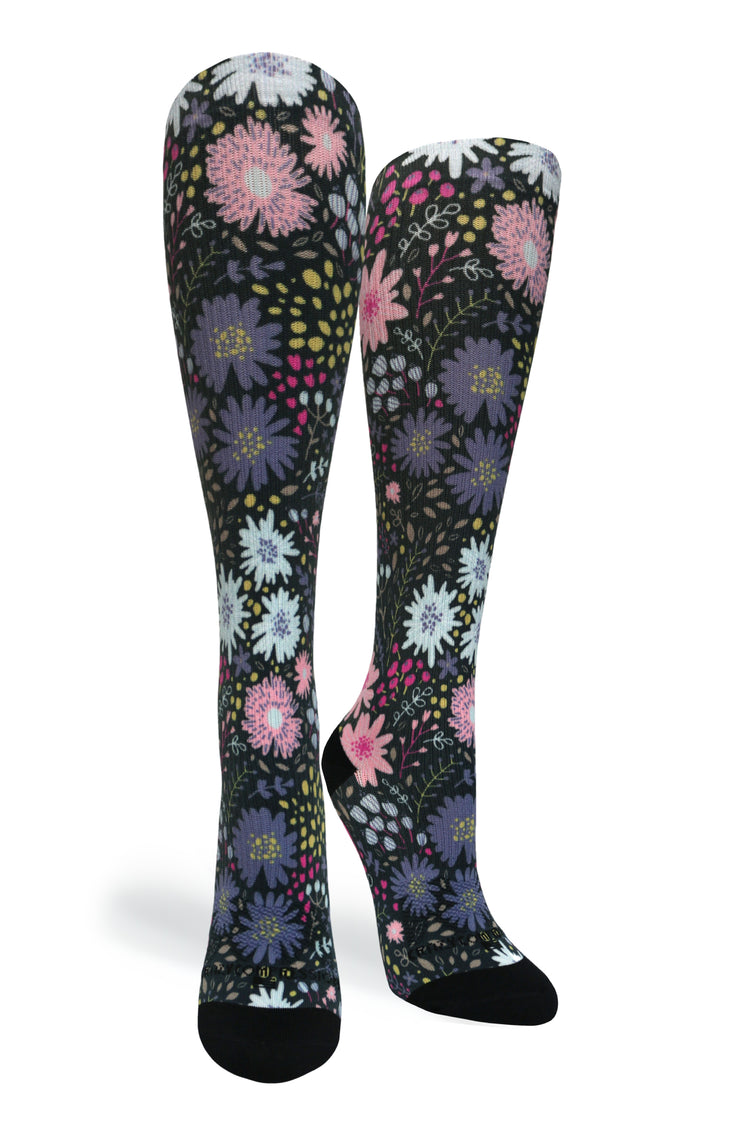How often do you study or check your feet? Many of us probably don't think about them too much until they begin to ache or cause problems, which could lead to other more severe issues. It's important to us at CrazyCompression that we help you maintain healthy legs and feet as much as possible. So today, we'll be talking about toenails. Yes, toenails, specifically treating and avoiding ingrown ones, are a familiar but painful problem many people encounter.
What Causes Ingrown Toenails?
1. Heredity
The potential to develop ingrown toenails can be inherited from one or both parents. The shape of your nails is a genetic train, so it may be that some people are genetically predisposed to getting them.
2. Poorly Fitted Footwear
If your socks, shoes, or boots have begun to feel too short or tight, cramming your feet into too-small footwear is a perfect environment for ingrown toenails. Especially if you're a teen or adolescent, as sudden growth spurts and body changes occur, teens can outgrow their footwear quickly and wear them a while before finding better-fitting shoes or socks.
3. How the Nail is Cut
Whether cutting your toenails at home or getting a pedicure—make sure you go to an experienced, licensed technician. One of the most common causes of ingrown toenails is cutting the nail too short. If a toenail is too short, it encourages the skin at the sides to fold over it. Don't let yourself or your pedicure technician get too overzealous with the clippers.
4. Poor Circulation
Adults with decreased arterial circulation are more susceptible to ingrown toenails. If you have diabetes, heart disease, or have a long history of tobacco use and regularly suffer from ingrown toenails or foot swelling, it is crucial to see your physician or foot and ankle doctor regularly.
5. Repeated Trauma
Stubbing your toe is familiar to many of us. However, if you've got a toe that you're prone to stub repeatedly, or if it has suffered an injury before, trauma may cause an ingrown.
How to Properly Cut Toenails to Avoid Ingrowns
Proper Tools
The first step is to ensure you have a proper toenail cutting tool. Toenail clippers or manicure scissors are acceptable, but always avoid regular scissors or knives not made explicitly for nail cutting.
You should own two sets of nail clippers—one for fingernails and one for toes. Since toenails are broader and thicker, they require a sharper and stronger clipper. Also, keeping the clippers separate and clean reduces the chance of bacteria or fungus being transferred between feet and hands. Ensure you clean clippers thoroughly between every use.
How Often You Cut
The second step to proper toenail cutting is how frequently you do so. Most people's toenails grow roughly 2 millimeters or 0.08 inches per month, so you only need to trim them every six to eight weeks. If you are more active, like a runner, you may want to cut more often to remain comfortable.
Cutting Wet or Dry Nails?
Should you cut your nails before or after a shower? In most cases, it's before when your nails are dry. Dry toenails are less likely to bend and tear, meaning you'll get a cleaner cut. If you have thick toenails, cutting them after a shower when they are wet will be easier.
Cutting the Toenail
To avoid painful ingrown nails, cut your toenails straight across. If it's easier to do so in two cuts, feel free. Avoid trimming or rounding the corners of a toenail, as that can encourage the edges to grow into the skin as the edges tend to curl.
Finish the process by using a nail file to remove any jagged edges that could snag or potentially tear the nail as it grows.
How to Treat Ingrown Toenails
If your ingrown does not show signs of infection, such as swelling, being hot to the touch, oozing, or having a foul odor, you can potentially treat the ingrown at home.
• Soak your feet in warm water with Epsom salts, or apply a warm, moist compress to the toe until the nail is flexible. (And no, a shower doesn't count here.)
• Dry your feet thoroughly and between your toes to avoid lingering sweat or dampness.
• Place a clean wedge, straight splitter, cotton ball, or dental floss under the ingrown area of the nail. This will lift the ingrown, separating the nail from the skin edge. Apply antibiotic ointment to the area and, if needed, wrap it in a bandage to keep it clean and sterile. It will help the nail grow away from the skin. However, this takes anywhere from 2 – 12 weeks, and your feet must be soaked daily, and the cotton ball, floss, wedge, or splitter needs replacing every day.
• Wear open-toed shoes during this time or a shoe will a generously large toe box.
• Take over-the-counter pain relievers to help reduce mile tenderness and swelling.
When To See a Dr. About an Ingrown Toenail
If your ingrown toenails show signs of infection, such as redness, swelling, being hot to the touch, oozing, pus, or a foul smell coming from the nail—it's time to see your doctor or your podiatrist.
Your Dr. or podiatrist will be able to handle an infected ingrown better, numbing the area, removing the toenail, and no doubt prescribing antibiotics to fight the infection. Never ignore an infected toe, especially if you have diabetes or circulation problems.
Unless your ingrown is due to a disease or something you've dealt with since birth—the best way to prevent ingrown toenails is to protect your feet, wear properly fitting socks and shoes, trim them properly and look after them. After all, we think your toes are essential! They keep us on our feet and moving.
We hope we've managed to help you fight against the dreaded ingrown! Have more questions? Want to learn more about compression therapy and foot health? Make sure to check our blog and site often!








Leave a comment
This site is protected by reCAPTCHA and the Google Privacy Policy and Terms of Service apply.